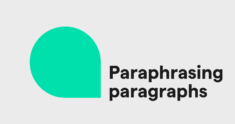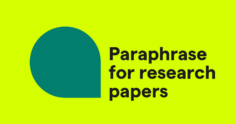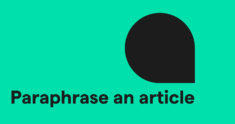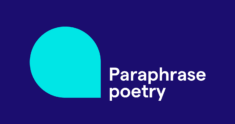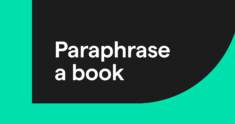
What is consonance in English? It’s the same sounds exercised in succession, like these s sounds from the letters s, x, and c. Consonance comes in handy for poetry, lyrics, and all kinds of writing, but how do you use consonance sounds correctly?
What is consonance?
Consonance is a literary device that repeats the same consonant sounds in adjacent or nearby words, like the –ck sound in tick tock or the n sound in lone ranger. The same vowel sounds are not required, so consonance words don’t always rhyme. Moreover, unlike rhymes, the shared sound can come anywhere in the word—the beginning, middle, or end.
Writers use consonance to make their words more engaging, or to stand out. Because of its close relation to rhymes and rhythm, consonance is used in all types of poetry and music, as well as prose writing to a lesser extent.
What is consonance in poetry?
In poetry, consonance is important for creating delightful sounds and rhythm. The musical nature of consonance sounds often enhances the inherent rhymes or repetition of poetry, making it a great fit.
While consonance can make any line or passage a little more memorable, it also helps with slant rhymes, also known as forced, oblique, or imperfect rhymes. Slant rhymes are words that almost rhyme, but not exactly.
For example, take a look at this excerpt from “ ‘Hope’ is the thing with feathers,” by Emily Dickinson, who is known for her slant rhymes:
“Hope” is the thing with feathers – That perches in the soul – And sings the tune without the words – And never stops – at all –
Dickinson uses consonance in the words soul and all, for sound of the consonant l. Because the l sound comes at the ends of the words, soul and all sound similar. However, they each use a different vowel sound, so they are not a true rhyme.
Special types of consonance sounds
Alliteration
The most famous type of consonance, alliteration is when the beginnings of words use the same consonant sound, like Bruce Banner or Peter picked a peck of pickled peppers. Some linguists also suggest alliteration encompasses vowel sounds at the beginnings of words too, like auburn autumn. Alliteration with vowel sounds is not consonance.
Sibilance
Sibilance is a specific type of consonance that uses the s or z sound. Not only are sibilant sounds abundant in English, but they also create an intense sound when used in tandem. One of the most famous examples of sibilance comes from “The Raven” by Edgar Allan Poe:
And the silken sad uncertain rustling of each purple curtain.
Notice how the letter c can make an s sound, so sometimes it can be used for sibilance.
Examples of consonance in English
Examples of consonance in a poem:
The buzz saw snarled and rattled in the yard And made dust and dropped stove-length sticks of wood, Sweet–scented stuff when the breeze drew across it. And from there those that lifted eyes could count Five mountain ranges one behind the other Under the sunset far into Vermont.
—“Out, Out—” by Robert Frost
The first three lines of Frost’s poem use consonance with both the s and d sounds concurrently, while the fourth line uses standalone consonance for the th- and hard c sounds.
Example of consonance in a song:
And in my hour of darkness She is standing right in front of me Speaking words of wisdom Let it be […] Whisper words of wisdom Let it be
—“Let It Be” by The Beatles
The Beatles use sibilance (consonance for the s sound) in the first verse, but the more characteristic example is the alliterated w sound in the line from the chorus, “Whisper words of wisdom.”
Example of consonance in a nursery rhyme:
Jack and Jill went up the hill To fetch a pail of water; Jack fell down and broke his crown And Jill came tumbling after.
—“Jack and Jill”
In this famous nursery rhyme, we see consonance with the j sound of the characters’ names, and also the l sound in many of the other words, including Jill.
Consonance vs. assonance
While consonance is the repetition of consonant sounds in adjacent or nearby words, assonance is the repetition of vowel sounds. Both consonance and assonance represent the same idea—using the same sounds near each other—but the difference lies in the type of sound, or more specifically the types of letters that cause the sound.
Consonance vs. alliteration
Consonance is often confused with alliteration, but the truth is that alliteration is just one type of consonance. When alliteration uses a consonant as the repeated sound, like the l in Love’s Labour Lost, it’s a form of consonance.
However, alliteration can also be used with vowel sounds at the beginning of words. In this case, alliteration would be assonance instead of consonance—although linguists disagree about whether that’s true alliteration.
Consonance FAQs
What is consonance in English?
Consonance is a literary device that repeats the same consonant sounds in adjacent or nearby words, like the –ck sound in tick tock or the –n sound in lone ranger. The same vowel sounds are not required, so consonance words don’t always rhyme. Moreover, unlike rhymes, the shared sound can come anywhere in the word—the beginning, middle, or end.
What is consonance in poetry?
Consonance fits well with poetry because its musical nature matches the rhymes and rhythm of a poem. Specifically, consonance helps with slant rhymes, which are words that almost rhyme, like soul and all.
What’s the difference between consonance, alliteration, and assonance?
Consonance and assonance both refer to the repetition of sounds. Consonance is when the sound comes from a consonant letter, like the –s sound in bus seat, whereas assonance is when the sound comes from a vowel, like the –oo sound in gloomy tune. Alliteration is when the repeated sound comes at the beginning of the word, like Peter Parker, and can be either consonance or assonance.

